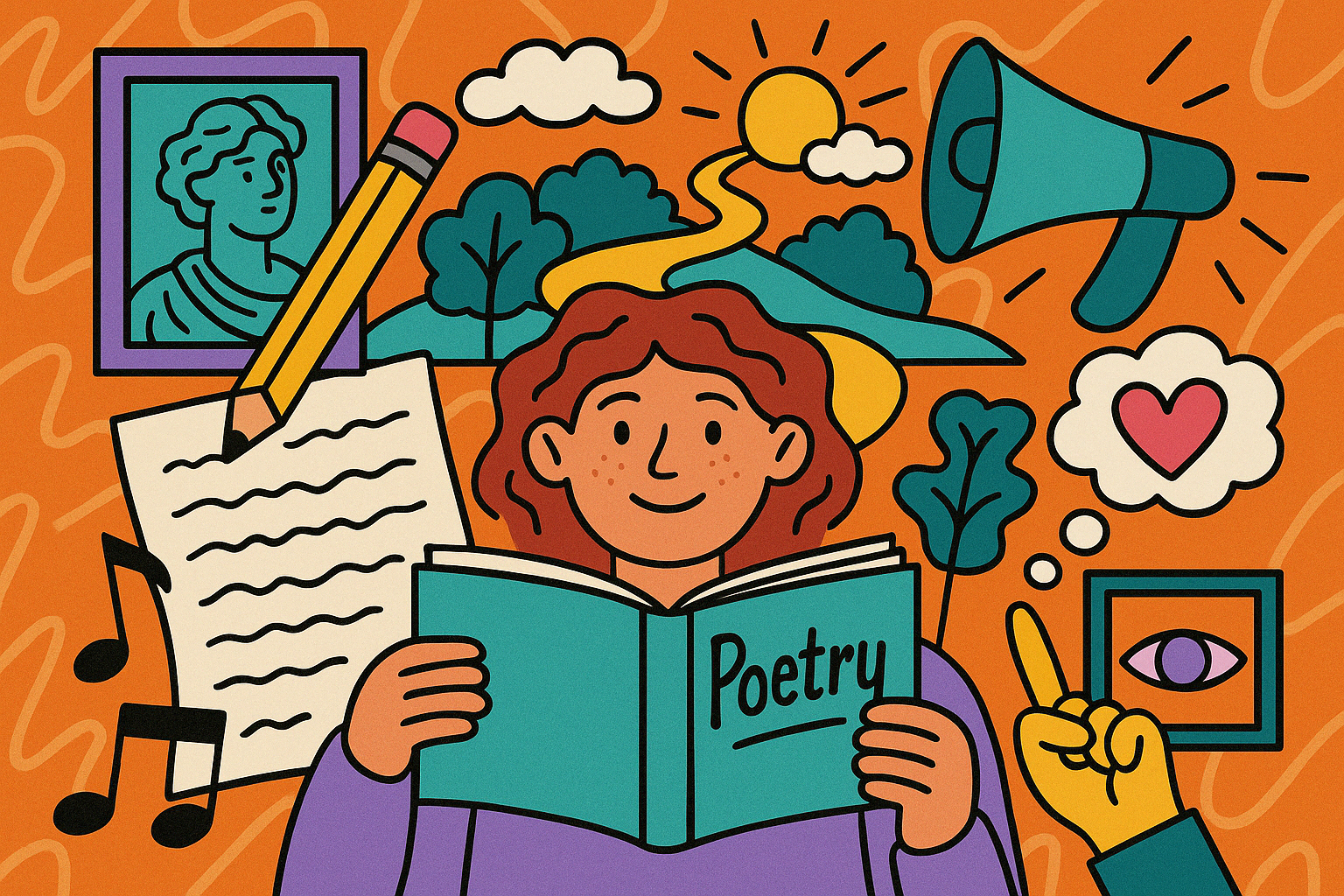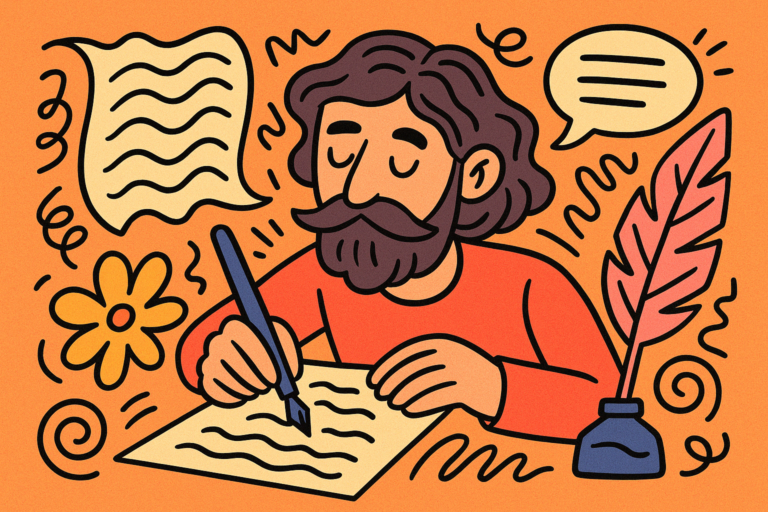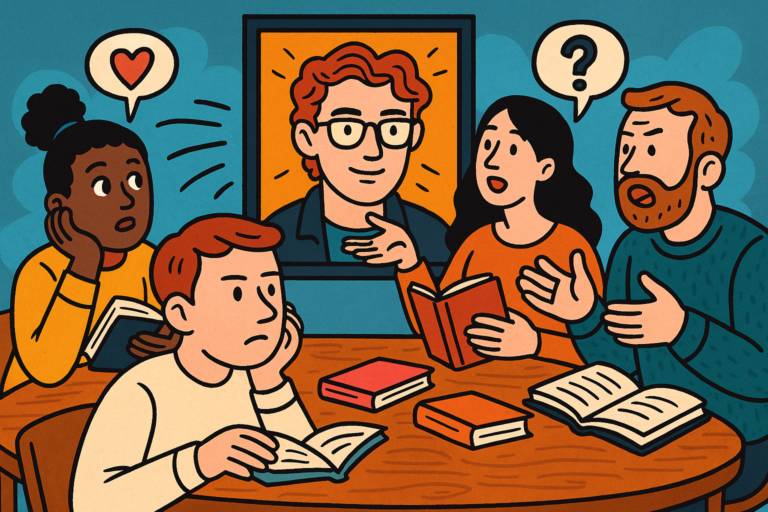How Can You Learn To Appreciate Poems As A Casual Reader

Here’s the thing I kept bumping into while researching this topic: most casual readers aren’t intimidated by poetry because they think it’s boring—they’re intimidated because they think they’re doing it wrong.
That realization really stuck with me.
I kept seeing this invisible wall between “real readers of poetry” and everyone else. And oddly enough, a lot of that wall is built from the way we—teachers, scholars, critics, even enthusiastic fans—talk about poems.
When someone’s first experience with poetry is being asked to “unpack the symbolism” or identify enjambment in stanza two, the fun drains out fast.
So this article is about that gap, and how we (as the people who already love and understand poetry) might be unintentionally keeping others out. But it’s not all bad news—I think there’s a way to fix it.
Start With How It Feels, Not What It Means
How many of us really appreciated poetry the first time we cracked open a Norton anthology? Probably not many.
But once you start to see poems as living, feeling things—not puzzles—something clicks. And I think this is the shift that casual readers need help making: from analysis to experience.
Poetry isn’t a math problem—it’s a moment.
Now, I’m not knocking close reading or literary analysis (they’re crucial tools), but they can’t be the first tools we hand someone. Especially not someone new to poetry.
We have to remember: people don’t fall in love with form—they fall in love with feeling. And often, when someone says “I don’t get poetry,” what they really mean is “I wasn’t given permission to just feel something.”
A great example of this: Emily Dickinson. Her poem, “I felt a Funeral, in my Brain,” is rich with metaphysical implications and brilliant formal choices.
But if we lead with analysis—say, breaking down her meter or themes of psychological decay—we miss the raw eeriness that a casual reader might instantly connect with.
A better opening question might be: “Did this feel strange to you? Did it make you uneasy?” Because that’s the hook. That’s where interest begins.
The First Read Rule
One expert I interviewed told me they encourage students to do a “first read” with no agenda—just eyes, ears, and emotions. I loved that. It reminded me that the first encounter with a poem should be emotional, not intellectual.
What line felt heavy? What phrase stuck in your head an hour later?
That’s gold.
And it’s accessible.
This also helps reframe the purpose of poetry. We’re not reading to decode—we’re reading to connect. It’s not about knowing; it’s about noticing.
The Role of Ambiguity (and How to Normalize It)
Here’s something else I found really interesting: casual readers often equate confusion with failure.
But we know that ambiguity is part of what makes poetry powerful. It invites multiple readings, shifts meaning over time, and resists closure.
But how often do we tell beginners that it’s okay not to “get it” right away? Probably not enough. That silence feeds the idea that poetry is for “smart” people with the right vocabulary. If we, as experts, start modeling comfort with uncertainty—saying things like, “I’m not totally sure what this means, but I love the mood it creates”—we give others permission to read without pressure.
Lead With Feeling, Layer With Insight
I think a lot of experts (understandably!) want to share all the cool technical stuff that makes a poem work.
But the best way to do that might be in layers. Think of it like music—you can enjoy a song for its melody before you understand how the chord progression works. Let readers fall in love first. Then nerd out.
So to sum this part up: if we want casual readers to appreciate poetry, we have to make space for feeling first. Analysis can come later—it should. But the doorway in?
It’s emotion, sound, rhythm, and gut-level reaction.
Next up, I’ll get into some practical ways to actually do this—no theory, just tools.
Five Ways To Help People Actually Connect With Poems
Alright, let’s talk real-life strategies—the kind of stuff you can actually use when you’re trying to get someone who “doesn’t like poetry” to maybe, just maybe, enjoy it. These aren’t magic tricks or oversimplified hacks.
They’re thoughtful, tested ways to create connection and open up space for curiosity. And I picked these five because they’re flexible, low-barrier, and they really do work.
1. Read Poems Out Loud—Together
This one seems basic, but it’s powerful. Sound is often the first sensory hook for poetry. When casual readers hear a poem, rather than just seeing it on the page, something changes. There’s rhythm, breath, tone—it becomes embodied.
When I spoke to a high school teacher who runs weekly poetry sessions, she told me the turning point for many students was when they started reading aloud in pairs. They stopped worrying about meaning and started responding to feeling—“That line sounded heavy,” or “This part felt weird to say.” That’s engagement!
You can even take it further by having two people read the same poem in different styles. It’s fascinating to hear how delivery can shape interpretation. You’re showing, not telling, that poems are flexible and alive.
Expert tip: Try this with a sound-driven poem like Gerard Manley Hopkins’ “God’s Grandeur.” The alliteration and sprung rhythm almost force a physical reaction when read aloud.
2. Start With Modern Voices Before Digging Into The Classics
This might be controversial, but hear me out: sometimes the classics are not the best gateway. They’re amazing, yes, but the language and cultural references can feel like a second language to new readers.
Instead, start with contemporary poets who use plainspoken language and real-life experiences. Think Ada Limón, Clint Smith, or Mary Oliver. Their poems offer emotional clarity, accessibility, and a sense of immediacy.
A casual reader can read Limón’s “Instructions on Not Giving Up” and think, I’ve felt that. That’s a powerful opening. Later, you can introduce Dickinson’s dashes or Donne’s conceits—but once the reader has a foothold, not before.
Expert tip: Keep a “starter set” of emotionally rich, accessible poems ready to go. You can even theme them around seasons, moods, or moments—like a playlist.
3. Ask Questions Instead of Explaining Everything
It’s tempting (especially if you know a lot) to jump in with context, history, and deep analysis. But the best way to help someone engage is often to ask a really good question and then get out of the way.
Here are some of my favorite open-ended ones:
- What’s the one line you’d underline?
- Where do you think the speaker is emotionally?
- Is there a part that confused you—but in an interesting way?
- If this poem were a photograph, what would it look like?
What this does is shift the conversation from correctness to curiosity. That’s a huge win. Now the reader isn’t trying to pass a test—they’re trying to understand their own reaction.
Expert tip: Try pairing a historical poem with a current event or personal anecdote. Ask, “Does this still hold up emotionally today?”
4. Use Visuals, Music, and Other Art Forms as Bridges
A lot of casual readers are already emotionally fluent—they just use different mediums. So lean into that! Use art, photos, or even memes to help unlock the tone or mood of a poem.
I once saw a group reading Rilke’s “Archaic Torso of Apollo” alongside images of broken statues and digital glitch art. Suddenly, the line “You must change your life” hit like a modern challenge, not just a literary mic drop. The visual gave the poem dimension and made it feel urgent.
Similarly, pairing poems with songs—especially those with poetic lyrics (Leonard Cohen, Mitski, Kendrick Lamar)—can be a total game-changer. You’re creating an emotional reference point.
Expert tip: Try giving readers a choice—“Here are 3 images. Which one fits this poem best?” The act of choosing makes them engage.
5. Let Them Choose the Poem (and the Pace)
This one’s huge: agency creates investment. If you’re always handing someone a poem and saying, “Read this,” they might not feel connected. But if you hand them a short list and ask, “Which of these speaks to you today?”—it’s a whole different vibe.
Even better, let them find a poem on their own. Sites like Poetry Foundation or Button Poetry have great search tools. Ask them to come back with a poem they liked, not one they understood. That’s an important distinction.
Also, slow it down. Reading one poem deeply is way better than skimming five. Let people revisit, reflect, and even change their mind about how they feel. That’s real appreciation.
Expert tip: Try a “poem of the week” approach with no pressure—just one poem to sit with and discuss casually. Low effort, high reward.
How To Help People Stay With Poems (Without Making It a Chore)
So let’s say you’ve hooked someone. They read a poem. They liked it. Maybe they even asked for another. Amazing.
But here’s the bigger question: how do you help them keep going? How do you build appreciation into a habit, not a one-off moment?
This is the long game. And the answer isn’t more poems. It’s more space, more permission, and—oddly enough—less pressure.
Let Go of the “Literary Workout” Mentality
There’s this lingering idea that poetry should be hard. Like, if it isn’t mentally taxing, it doesn’t count. And while challenging poems can absolutely be rewarding, that mindset can suck the joy out of the process.
One casual reader told me she quit reading poetry after a college class because it felt like “getting graded every time I opened the book.” That broke my heart a little. Because we want more people reading poetry—but not if they feel like failures doing it.
So as experts, we have to resist the urge to turn every reading into a lesson. Let people enjoy simple poems. Let them misinterpret. Let them play.
Pro move: Model your own process. Say things like, “I’m not totally sure what this means yet—I’m just sitting with it.” That kind of transparency is powerful.
Create Rituals, Not Routines
People remember rituals. They’re meaningful, personal, and emotional. Reading a poem doesn’t have to be a chore on a checklist—it can be something comforting, curious, or even spiritual.
You can suggest:
- Morning poem over coffee
- Friday night wind-down read
- Sending a friend a poem every Sunday
- Reading the same poem once a month and noticing what’s different
The key here is repeat exposure in a low-pressure setting. It’s like building a relationship with poetry. You visit often, you don’t expect fireworks every time, and you trust that meaning builds slowly.
Normalize Re-Reading (and Re-Feeling)
Here’s a truth that poets know deeply: the second (or tenth) time you read a poem, it hits different. But casual readers sometimes think if it didn’t click the first time, it never will.
That’s where we come in. We can encourage them to revisit a poem later and see if something new stands out. Ask them to underline a different line. Or read it in a different mood. This takes the pressure off the first read being definitive.
It’s also a great way to show how we do it. “I used to skim past this line, but now it feels central.” That gives people permission to evolve in their understanding. And once that clicks? They stop fearing poems and start living with them.
Use Community (Even a Tiny One)
Let’s be real: poetry is often a solo activity. But the moment you bring in shared reflection, things shift.
You don’t need a formal book club—just two people who swap poems and reactions once a week. Or a group chat where someone drops a poem when they find a good one. These casual “poetry pockets” give people a sense of belonging, which is often more motivating than the poems themselves.
One educator I spoke to runs a “one-line exchange” with a friend. They text each other a single line from a poem that moved them that day. No context, no expectations. Just small sparks of connection.
Try this: Create a shared doc or group chat for “lines that linger.” Not full poems—just snippets. It turns reading into collecting.
Appreciation Is Slow—And That’s Okay
Finally, we need to accept that poetry appreciation grows slowly. You don’t “convert” someone with one great poem. It’s a gradual shift—from confusion to curiosity to recognition. That arc can take weeks, months, or even years.
But if we normalize that pace—if we say “you don’t have to love this, just notice what it does to you”—we remove the fear. And we make space for people to come back, again and again, until poetry becomes something they carry with them.
And isn’t that kind of the dream?
So, Where Do We Go From Here?
If there’s one thing I’ve learned from digging into all this, it’s that helping someone appreciate poetry isn’t about teaching them to be more like us—it’s about helping them notice what they already feel.
And honestly, that takes more humility than expertise.
It means stepping back, asking better questions, being okay with silence, and letting people build their own weird, wonderful relationships with poems—without grading the process.
Poetry isn’t a locked room with a secret key. It’s a room full of windows, and everyone sees something a little different. As experts, we get the privilege of showing people where those windows are—and then watching what they discover through them.
And that?
That’s the kind of magic that never gets old.





